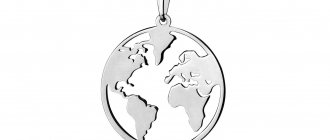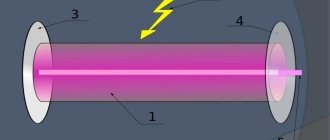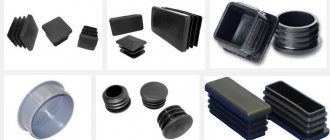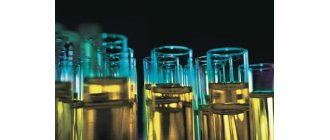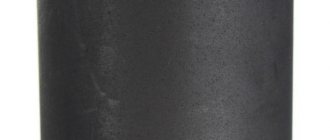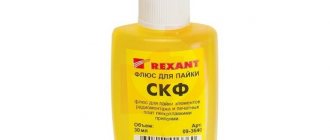Kerosene is a flammable fraction of oil, a transparent liquid with an oily structure and a light yellow color. The liquid flammable carbons from which it consists are distinguished by a very high boiling point, from +150°C to +250°C. The characteristics and flammable properties of this petroleum product allow it to be used for refueling aircraft and automobile equipment, devices used for lighting, and stoves.
The ancient Greek word "Kηρóς", meaning wax, gave its name to kerosene.
Story
Information about the distillation of oil begins in the 10th century AD. However, distillation products were not widely used despite information about the use of oil in oil lamps. The industrial use of light petroleum products in lighting began in the 40-50s of the 19th century. Various people have demonstrated the production of a light, low-odor flammable liquid by distillation from coal, bitumen, and oil. A number of patents were obtained. In 1851, the first industrial distillation plant in England came into operation. In 1854 the trademark “kerosene” was registered. The process of adapting oil lamps into a kerosene lamp began. In 1853, in Lviv, workers at the pharmacy of Peter Mikolyash “Under the Golden Star”, Ignatiy Lukasiewicz and Jan Zeg developed a method for distilling and purifying oil. Now it was possible to begin the production of kerosene, or “new campine”, as Lukashevich called kerosene. In December 1853, scientists received an Austrian patent. In the same year, Zeg opened the first small oil refinery in Lviv. In the 19th century, only kerosene was used from oil distillation products (for lighting), and the resulting gasoline and other petroleum products had extremely limited use. For example, gasoline was used for pharmaceutical and veterinary purposes, as well as as a household solvent, and therefore oil industrialists simply burned large reserves of it in pits or poured them into reservoirs. In 1911, kerosene lost its leading position to gasoline in the world petroleum products market due to the spread of internal combustion engines and electric lighting. The importance of kerosene began to increase again only in the 1950s, due to the development of jet and turboprop aviation, for which this particular type of petroleum product (jet fuel) turned out to be an almost ideal fuel. The origin of the word kerosene is also interesting. Thus, in the Russian Encyclopedia (vol. 10, p. 42), published in St. Petersburg by the book partnership “Activist”, it is said: “Kerosene... was put on sale by the trading house “Care and Son”, hence the name.” . However, in the Great Soviet Encyclopedia we read: “Kerosene (English kerosene, from the Greek kerós - wax)”
Notes
- [www.sultanov.azeriland.com/oil/oil_book.html The era of the birth of the oil industry of Azerbaijan]: “..here an amazing amount of oil comes out of the ground, for which people come from the distant borders of Persia; it serves throughout the country to illuminate their homes.” J. Duquette, 16th century.
- [www.tekhnospas.ru/art/statii/firstfab/ First oil refinery 1940-05, pp. 44-45
- [my-baku.ru/suraxany/ Azerbaijani oil]
- Russell Loris S.
A Heritage of Light: Lamps and Lighting in the Early Canadian Home. - University of Toronto Press, 2003. - ISBN 0802037658. - Danilevsky V.V. “Russian technology”, p. 245. Lenizdat, 1949
- [www.medn.ru/statyi/sbornik-retseptov-narodnoy-meditsinyi-2/difterit.html Treatment of diphtheria with folk remedies and methods]. Retrieved April 2, 2013.
- [www.aznarmed.ru/newfile_785.htm Diphtheria in children]. Retrieved April 2, 2013. [www.webcitation.org/6Fc4qN0GL Archived from the original on April 4, 2013].
- [www.housedoctors.ru/pg/difteriya.htm Diphtheria]. Retrieved April 2, 2013. [www.webcitation.org/6Fc4sK0za Archived from the original on April 4, 2013].
- [fito-doktor.ru/fito-doktor/index.php/lenta-novostej/93-spravochniki/spravochnik-zabolevanij/detskie-zabolevaniya/835-difteriya Fito Doctor - Diphtheria]. Retrieved April 2, 2013. [www.webcitation.org/6Fc4sxMSZ Archived from the original on April 4, 2013].
- [diagnostichouse.ru/difteriya/3179-difteriya-u-detej.html Diphtheria in children » House of Diagnostics]. Retrieved April 2, 2013. [www.webcitation.org/6Fc4u8EGc Archived from the original on April 4, 2013].
What is this?
Kerosene is a flammable mixture consisting of liquid hydrocarbons. The boiling point of kerosene varies between 150-250° Celsius. It is a clear, colorless (in some cases yellowish) liquid, slightly oily to the touch.
The word itself comes from English. kerosene. In turn, it has Greek roots: κηρός - “wax”.
Kerosene is obtained by direct distillation or ratification of petroleum. Sometimes - through its recycling. In some cases, the product is hydrotreated.
Composition of the substance
We figured out the boiling point of kerosene. Now let's imagine the composition of this product. It is not universal and standard, since it depends on the raw material - oil, its processing method and chemical composition.
So, the composition of kerosene according to GOST:
- Aliphatic saturated hydrocarbons - 20-60% of the total mass.
- Naphthenic hydrocarbons - 20-50%.
- Aromatic bicyclic hydrocarbons - 5-25%.
- Unsaturated hydrocarbons - up to 2%.
- Insignificant content of impurities - sulfur, oxygen or nitrogen.
Let us now imagine the most important properties of this substance.
| Substance | Content, % | ©PetroDigest.ru |
| Paraffins (alkanes) | 20 — 60 | |
| Naphthenes (cycloalkanes) | 20 — 50 | |
| Bicyclic aromatic hydrocarbons | 5 — 25 | |
| Unsaturated hydrocarbons | up to 2% | |
| Sulfur, nitrogen, oxygen-containing impurities | present |
Aviation
It is divided into jet and aircraft fuel. Has a high ignition rating and also:
- Suitable for lubricating engines and fuel supply systems of various aircraft.
- Used as a refrigerant.
- Characterized by increased oxidation when heated.
- Differs in stability of indicators.
- It is resistant to low temperatures.
Kerosene is often used to remove plaque and rust on equipment components.
Technical
According to GOST 18499-73, the KT-1 and KT-2 varieties may contain no more than 7% aromatic carbons. The substance serves as a raw material for the production of ethylene, and also replaces other solvents and substances for washing or cleaning:
- Equipment units.
- Transport details.
Up to 20% kerosene can be added to summer diesel. This allows you to reduce the freezing point without losing the performance properties of diesel fuel.
To determine at what temperature the kerosene becomes cloudy, you need to conduct an optical experiment. It is necessary to observe the change in the throughput of the substance relative to light rays
Lighting
Thanks to the composition regulated by GOSTs “Lighting kerosene from sour crude oil” 11128-65 and “Lighting kerosene” 4753-68, when the product is burned, black soot and soot are not formed. The substance is used for household lighting and heating devices - kerosene stoves, kerosene stoves and kerosene gases. It is used to remove old paintwork. Kerosene is suitable for:
- Cleaning.
- Dissolutions.
- Washing.
- Degreasing.
- Impregnations.
Lighting kerosene, the chemical composition of which is characterized by strong evaporation, is safe for others. The vapor content does not exceed 300 mg per 1 m3.
The composition of kerosene allows it to be used for firing glass and porcelain products
Excerpt characterizing Kerosene
“Yes, there you were,” said Prince Bagration, turning to Prince Andrei. “Well, we didn’t move in together for a bit,” said the officer on duty, smiling pleasantly at Bolkonsky. “I did not have the pleasure of seeing you,” said Prince Andrei coldly and abruptly. Everyone was silent. Tushin appeared on the threshold, timidly making his way from behind the generals. Walking around the generals in a cramped hut, embarrassed, as always, at the sight of his superiors, Tushin did not notice the flagpole and stumbled over it. Several voices laughed. – How was the weapon abandoned? – Bagration asked, frowning not so much at the captain as at those laughing, among whom Zherkov’s voice was heard loudest. Tushin now only, at the sight of the formidable authorities, imagined in all horror his guilt and shame in the fact that he, having remained alive, had lost two guns. He was so excited that until that moment he did not have time to think about it. The officers' laughter confused him even more. He stood in front of Bagration with a trembling lower jaw and barely said: “I don’t know... your excellency... there were no people, your excellency.” – You could have taken it from cover! Tushin did not say that there was no cover, although this was the absolute truth. He was afraid to let down another boss and silently, with fixed eyes, looked straight into Bagration’s face, like a confused student looks into the eyes of an examiner. The silence was quite long. Prince Bagration, apparently not wanting to be strict, had nothing to say; the rest did not dare to intervene in the conversation. Prince Andrey looked at Tushin from under his brows, and his fingers moved nervously. “Your Excellency,” Prince Andrei interrupted the silence with his sharp voice, “you deigned to send me to Captain Tushin’s battery.” I was there and found two thirds of the men and horses killed, two guns mangled, and no cover. Prince Bagration and Tushin now looked equally stubbornly at Bolkonsky, who was speaking restrainedly and excitedly. “And if, Your Excellency, allow me to express my opinion,” he continued, “then we owe the success of the day most of all to the action of this battery and the heroic fortitude of Captain Tushin and his company,” said Prince Andrei and, without waiting for an answer, he immediately stood up and walked away from the table. Prince Bagration looked at Tushin and, apparently not wanting to show distrust of Bolkonsky’s harsh judgment and, at the same time, feeling unable to fully believe him, bowed his head and told Tushin that he could go. Prince Andrei followed him out. “Thank you, I helped you out, my dear,” Tushin told him. Prince Andrei looked at Tushin and, without saying anything, walked away from him. Prince Andrei was sad and hard. It was all so strange, so unlike what he had hoped for. "Who are they? Why are they? What do they need? And when will all this end? thought Rostov, looking at the changing shadows in front of him. The pain in my arm became more and more excruciating. Sleep was falling irresistibly, red circles were jumping in my eyes, and the impression of these voices and these faces and the feeling of loneliness merged with a feeling of pain. It was they, these soldiers, wounded and unwounded, - it was they who pressed, and weighed down, and turned out the veins, and burned the meat in his broken arm and shoulder. To get rid of them, he closed his eyes. He forgot himself for one minute, but in this short period of oblivion he saw countless objects in his dreams: he saw his mother and her big white hand, he saw Sonya’s thin shoulders, Natasha’s eyes and laughter, and Denisov with his voice and mustache, and Telyanin , and his whole story with Telyanin and Bogdanich. This whole story was one and the same thing: this soldier with a sharp voice, and this whole story and this soldier so painfully, relentlessly held, pressed and all pulled his hand in one direction. He tried to move away from them, but they did not let go of his shoulder, not even a hair, not even for a second. It wouldn’t hurt, it would be healthy if they didn’t pull on it; but it was impossible to get rid of them. He opened his eyes and looked up. The black canopy of night hung an arshin above the light of the coals. In this light, particles of falling snow flew. Tushin did not return, the doctor did not come. He was alone, only some soldier was now sitting naked on the other side of the fire and warming his thin yellow body. “Nobody needs me! - thought Rostov. - There is no one to help or feel sorry for. And I was once at home, strong, cheerful, loved.” “He sighed and involuntarily groaned with a sigh. - Oh, what hurts? - asked the soldier, shaking his shirt over the fire, and, without waiting for an answer, he grunted and added: - You never know how many people have been spoiled in a day - passion! Rostov did not listen to the soldier. He looked at the snowflakes fluttering over the fire and remembered the Russian winter with a warm, bright house, a fluffy fur coat, fast sleighs, a healthy body and with all the love and care of his family. “And why did I come here!” he thought. The next day, the French did not resume the attack, and the rest of Bagration’s detachment joined Kutuzov’s army. Prince Vasily did not think about his plans. He even less thought of doing evil to people in order to gain benefit. He was only a secular man who had succeeded in the world and made a habit out of this success. He constantly, depending on the circumstances, depending on his rapprochement with people, drew up various plans and considerations, of which he himself was not well aware, but which constituted the entire interest of his life. Not one or two such plans and considerations were in his mind, but dozens, of which some were just beginning to appear to him, others were achieved, and others were destroyed. He did not say to himself, for example: “This man is now in power, I must gain his trust and friendship and through him arrange for the issuance of a one-time allowance,” or he did not say to himself: “Pierre is rich, I must lure him to marry his daughter and borrow the 40 thousand I need”; but a man in strength met him, and at that very moment instinct told him that this man could be useful, and Prince Vasily became close to him and at the first opportunity, without preparation, by instinct, flattered, became familiar, talked about what what was needed. Pierre was under his arm in Moscow, and Prince Vasily arranged for him to be appointed a chamber cadet, which was then equivalent to the rank of state councilor, and insisted that the young man go with him to St. Petersburg and stay in his house. As if absent-mindedly and at the same time with an undoubted confidence that this should be so, Prince Vasily did everything that was necessary in order to marry Pierre to his daughter. If Prince Vasily had thought about his plans ahead, he could not have had such naturalness in his manners and such simplicity and familiarity in his relations with all the people placed above and below himself. Something constantly attracted him to people stronger or richer than himself, and he was gifted with the rare art of catching exactly the moment when it was necessary and possible to take advantage of people. Pierre, having unexpectedly become a rich man and Count Bezukhy, after recent loneliness and carelessness, felt so surrounded and busy that he could only be left alone with himself in bed. He had to sign papers, deal with government offices, the meaning of which he had no clear idea of, ask the chief manager about something, go to an estate near Moscow and receive many people who previously did not want to know about his existence, but now would offended and upset if he didn’t want to see them. All these various persons - businessmen, relatives, acquaintances - were all equally well disposed towards the young heir; all of them, obviously and undoubtedly, were convinced of the high merits of Pierre. He constantly heard the words: “With your extraordinary kindness,” or “with your wonderful heart,” or “you yourself are so pure, Count...” or “if only he were as smart as you,” etc., so he He sincerely began to believe in his extraordinary kindness and his extraordinary mind, especially since it always seemed to him, deep down in his soul, that he was really very kind and very smart. Even people who had previously been angry and obviously hostile became tender and loving towards him. Such an angry eldest of the princesses, with a long waist, with hair smoothed like a doll’s, came to Pierre’s room after the funeral. Lowering her eyes and constantly flushing, she told him that she was very sorry for the misunderstandings that had happened between them and that now she felt she had no right to ask for anything, except permission, after the blow that had befallen her, to stay for a few weeks in the house that she loved so much and where made so many sacrifices. She couldn't help but cry at these words. Touched that this statue-like princess could change so much, Pierre took her hand and asked for an apology, without knowing why. From that day on, the princess began to knit a striped scarf for Pierre and completely changed towards him. – Do it for her, mon cher; “All the same, she suffered a lot from the dead man,” Prince Vasily told him, letting him sign some kind of paper in favor of the princess. Prince Vasily decided that this bone, a bill of 30 thousand, had to be thrown to the poor princess so that it would not occur to her to talk about Prince Vasily’s participation in the mosaic portfolio business. Pierre signed the bill, and from then on the princess became even kinder. The younger sisters also became affectionate towards him, especially the youngest, pretty, with a mole, often embarrassed Pierre with her smiles and embarrassment at the sight of him. It seemed so natural to Pierre that everyone loved him, it would seem so unnatural if someone did not love him, that he could not help but believe in the sincerity of the people around him. Moreover, he did not have time to ask himself about the sincerity or insincerity of these people. He constantly had no time, he constantly felt in a state of meek and cheerful intoxication. He felt like the center of some important general movement; felt that something was constantly expected of him; that if he didn’t do this, he would upset many and deprive them of what they expected, but if he did this and that, everything would be fine - and he did what was required of him, but something good remained ahead. More than anyone else at this first time, Prince Vasily took possession of both Pierre’s affairs and himself. Since the death of Count Bezukhy, he has not let Pierre out of his hands. Prince Vasily had the appearance of a man weighed down by affairs, tired, exhausted, but out of compassion, unable to finally abandon this helpless young man, the son of his friend, to the mercy of fate and the swindlers, apres tout, [in the end,] and with such a huge fortune. In those few days that he stayed in Moscow after the death of Count Bezukhy, he called Pierre to himself or came to him himself and prescribed to him what needed to be done, in such a tone of fatigue and confidence, as if he was saying every time: “Vous savez, que je suis accable d'affaires et que ce n'est que par pure charite, que je m'occupe de vous, et puis vous savez bien, que ce que je vous propose est la seule chose faisable.” [You know, I'm swamped with things; but it would be merciless to leave you like that; Of course, what I’m telling you is the only possible one.] “Well, my friend, tomorrow we’re going, finally,” he told him one day, closing his eyes, running his fingers over his elbow and in such a tone as if what he was saying was it was decided long ago between them and could not have been decided otherwise. “We’re going tomorrow, I’ll give you a place in my stroller.” I am very happy. Everything important is over here. But I should have needed it a long time ago. This is what I received from the chancellor. I asked him about you, and you were enlisted in the diplomatic corps and made a chamber cadet. Now the diplomatic path is open to you. Despite the strength of the tone of fatigue and the confidence with which these words were spoken, Pierre, who had been thinking about his career for so long, wanted to object. But Prince Vasily interrupted him in that cooing, bassy tone that excluded the possibility of interrupting his speech and which he used when extreme persuasion was necessary. - Mais, mon cher, [But, my dear,] I did it for myself, for my conscience, and there is nothing to thank me for. No one ever complained that he was too loved; and then, you are free, even if you quit tomorrow. You will see everything for yourself in St. Petersburg. And it’s high time for you to move away from these terrible memories. – Prince Vasily sighed. - Yes, yes, my soul. And let my valet ride in your carriage. Oh yes, I forgot,” Prince Vasily added, “you know, mon cher, that we had scores with the deceased, so I received it from Ryazan and will leave it: you don’t need it.” We will settle with you. What Prince Vasily called from “Ryazan” were several thousand quitrents, which Prince Vasily kept for himself. In St. Petersburg, as in Moscow, an atmosphere of gentle, loving people surrounded Pierre. He could not refuse the place or, rather, the title (because he did nothing) that Prince Vasily brought him, and there were so many acquaintances, calls and social activities that Pierre, even more than in Moscow, experienced a feeling of fog and haste and everything coming, but some good not happening.
Kinematic viscosity
When characterizing kerosene according to GOST, this position will also be relevant. It must be said that the viscosity of the hydrocarbons included in this product changes significantly with a decrease/increase in its temperature. The higher the latter is, the lower the viscosity becomes.
This is a very important characteristic. The viscosity of kerosene has a great influence on a number of operational features of aircraft fuel systems, as well as combustion and mixture formation processes in the engine.
Thus, the viscosity of kerosene at 20 °C is 1.2 - 4.5 mm2/s.
GNP
This abbreviation refers to the height of the non-smoking flame of the petroleum product. In particular, this is an important characteristic for KO-25 kerosene. Determines its ability to burn in a standard wick lamp (with a wick diameter of 6 mm) with a white, uniform flame without the formation of soot or soot.
This is a numerical indicator measured in millimeters. It must be indicated on the labels of the corresponding lighting brands of the product. GNP is directly influenced by the chemical and fractional compositions of kerosene.
Density
One of the most important characteristics used for all petroleum products. And if we compare the density of kerosene and water, we will see that the latter will be higher. Here are the specific numbers:
- The density of distilled water at an “ideal” temperature of 3.7 °C is 1000 kg/m3.
- The density of sea water at an “ideal” temperature of 3.7 °C is 1030 kg/m3.
- The density of boiling water at 100 °C is 958.4 kg/m3.
To further compare the density of water and kerosene, let’s get acquainted with this characteristic regarding the petroleum product. This is 800 kg/m3.
It must be said that in the early stages of the development of the oil industry, density was the only characteristic of kerosene. Today, in practice, the quantity most often used is relative density. This is a dimensionless indicator equal to the ratio of the true densities of a given petroleum product and distilled water, taken for comparison at certain temperatures.
Thus, the density of kerosene at 20 °C will be from 780 to 850 kg/m3.
How to determine
To determine the density of kerosene, it is necessary to use relative values. At +20°C the figure can be 780 to 850 kg/m3. To carry out calculations you can use the formula:
Р20 = РT + Y(T + 20)
In this equation:
- P – fuel density at test t° (kg/m3).
- Y – average temperature correction, kg/m3 (deg).
- T – heat indicator at which density measurements were made (°C).
When choosing fuels and lubricants, it is necessary to take into account the characteristics given in the quality certificate.
When T-1 kerosene is heated, its density decreases as thermal expansion occurs and volume increases due to thermal expansion. So at t° + 270°C, the density of grade T-1 will be 618 kg/m3.
Links
Natural gases Natural gas • Compressed natural gas • Liquefied natural gas • Liquefied petroleum gases • Associated petroleum gas • Coal gas • Gas hydrates • Shale gas Coals and shale Brown coal • Hard coal • Anthracite • Oil shale • Sapropelite • Coal coke Peat Peat • Peat coke Renewable and biological Deadwood • Firewood • Dung • Manure • Charcoal • Ethanol • Biodiesel • Bioethanol • Butanol-1 • Methanol • Landfill gas • Swamp gas • Biogas • Biohydrogen Artificial Blast furnace gas • Lamp gas • Coke gas • Tert- butyl methyl ether • Synthesis gas • Synthetic fuel • Producer gas • Hydrogen • Coal-water fuel • Pitch coke
Flash point
The next characteristic after the boiling point of kerosene is the flash point. This is a parameter that determines the degree of fire hazard of a given liquid. Here the flash point of kerosene will vary from 28 to 60 °C.
It must be said that this characteristic is strictly controlled by standards to prevent gasoline from entering the fuel, which can dramatically increase its flammability. The practical determination of the temperature of reactive flashes of kerosene liquid is prescribed by the standards of all countries of the world.
Auto-ignition temperature
Next in line is another thermal indicator - the ignition temperature of kerosene. This characteristic should be understood as the ignition of the steam-air mixture, which leads to combustion. However, ignition of vapors will not always be a sufficient condition for stable combustion of kerosene.
The auto-ignition temperature is the lowest temperature at which petroleum product vapors together with air can ignite without the presence of an ignition source. By the way, the functioning of diesel internal combustion engines is based on this remarkable property.
Self-ignition of kerosene will occur at a temperature of 300 °C.
Contrast flammability limit
CPV is another significant characteristic of kerosene. This is the name of the ratio of the area of ignition of petroleum product vapor and the concentration range of this flammable substance, which is evenly distributed in the oxidizing environment (most often in the air). Within the boundaries of the latter, the substance can ignite from ignition sources and spread its independent combustion throughout the mixture.
The CPV of kerosene will be equal to 1.2-8.0% of the volume of the substance.
Kerosene Specific Gravity Table
Since kerosene is a complex substance, it is not possible to calculate its required specific gravity in the field. These calculations are carried out in special laboratories using specialized equipment. However, the average of the specific gravity range is known and is equal to the values presented in the table below. This table will help you make the necessary calculations, including such a parameter as the weight of kerosene.
Specific gravity and weight of 1 liter of kerosene depending on units of measurement
| Material | Specific gravity (g/cm3) | Weight 1 liter (g) |
| Kerosene at 15 degrees Celsius | 0,79 – 0,82 | 790 – 820 |
Specific Gravity Calculations
In order to carry out the necessary calculations, it is necessary, first, to decide what this concept means.
Specific gravity is a designation for the ratio of the weight of a required substance to its volume. This parameter is calculated using the formula: y=p*g, where y is specific gravity, p is density, g is gravitational acceleration, which in normal cases is a constant and equals 9.81 m/s*s.
Results are measured in Newtons divided by cubic meter (N/m3). To convert to the international system, that is, in kg/m3, we multiply the value by 0.102.
The difference between kerosene and gasoline
The method for producing aviation kerosene is direct distillation of low-sulfur and sulfur oil. To improve the physicochemical properties of kerosene, various additives and hydrotreating are used. Kerosene has a number of advantages over gasoline:
- high heat of combustion (both mass and volumetric);
- low volatility;
- lower freezing point;
- low kinematic viscosity.
- In addition, kerosene is less fire hazardous than gasoline.
A significant advantage in using kerosene is its breadth of application. In addition to fuel for jet power plants, it is used on board as a coolant or coolant for radiators. To control the cross-section of the engine nozzle, a hydraulic system is used, the working fluid of which can also be kerosene. Needless to say, this type of fuel is an excellent solvent. This is extremely important when organizing the maintenance process of jet aircraft engines.
Rocket fuel
Kerosene is used in rocket technology as a hydrocarbon fuel and at the same time the working fluid of hydraulic machines. The use of kerosene in rocket engines was proposed by Tsiolkovsky in 1914. Paired with liquid oxygen, it is used in the lower stages of many launch vehicles: domestic ones - Soyuz, Molniya, Zenit, Energia; American - series "Delta" and "Atlas". To increase the density, and thus the efficiency of the rocket system, the fuel is often supercooled. In a number of cases in the USSR, a synthetic substitute for kerosene, syntin, was used, which made it possible to increase the efficiency of an engine designed for kerosene without significant changes in design. In the future, it is planned to replace kerosene with more efficient hydrocarbon fuels - methane, ethane, propane, etc.
Application
Kerosene is used as jet fuel, a flammable component of liquid rocket fuel, fuel for firing glass and porcelain products, for household heating and lighting devices, in machines for cutting metals, as a solvent (for example, for applying pesticides), and as a raw material for the oil refining industry. Kerosene can be used as a substitute for winter and arctic diesel fuel for diesel engines, but it is necessary to add anti-wear and cetane-boosting additives; The cetane number of kerosene is about 40, GOST requires at least 45. For multi-fuel engines (diesel based), it is possible to use pure kerosene and even AI-80 gasoline. It is allowed to add up to 20% kerosene to summer diesel fuel to reduce the pour point without compromising performance characteristics. Also, kerosene is the main fuel for fire shows (fire performances), due to its good absorption and relatively low combustion temperature. It is also used for washing mechanisms and removing rust.
History of the spread of kerosene in Russia
The formula of kerosene, its density, flammability and other characteristics made it possible to replace lighting gas and all kinds of fats. It began to be actively used back in the 19th century. This led to an increase in demand for oil, and the kerosene industry influenced the improvement of extraction methods and an increase in the consumption of black gold.
The demand for kerosene increased sharply with the advent of the primus stove and kerosene stove, which were used everywhere for cooking
At the beginning of the twentieth century, agricultural machinery with carburetor and diesel engines began to be fueled with kerosene. But this caused some difficulties.
The octane number of kerosene is lower than 40 units, and volatility is worse than that of gasoline, so starting a cold engine was very difficult. In this regard, the cars were equipped with an additional small gas tank.
The mass of kerosene consumed as fuel by vehicles was high, and it was soon replaced by gasoline and diesel fuel.
The popularity of kerosene resumed in the mid-twentieth century, with the development of the aviation and rocket industries
Is kerosene dangerous for humans?
As with any technical fluids, it all depends on the quantity. Considering the fact that kerosene is obtained from oil as a natural resource, it is harmless in small quantities. The substance is often used for medical purposes, but mostly for external use. If they enter the esophagus, heavy fractions can cause deterioration of health and allergic reactions. In such cases, decontamination elements should be adopted.
Speaking about what kerosene is, we should remember about an extremely interesting set of chemical elements and active compounds to study. Practical properties as a fuel, technical fluid, and feedstock for various types of industry keep this substance at the level of global consumer demand.
Main areas of use
In conclusion, we present the most common areas of use of the substance:
- Aviation kerosene. This is the name of motor fuel for gas turbine engines, which are equipped with various aircraft. These are kerosene fractions of direct distillation of oil. They are often hydrotreated and additives are added to improve performance properties. In Russia, five varieties of such fuel are produced for subsonic aviation - TS-1, T-1, T-1S, T-2 and RT, and for supersonic aviation - two (T-6 and T-8V).
- Rocket kerosene. Here this petroleum product acts as a hydrocarbon, environmentally friendly fuel and the working fluid of hydraulic machines. Its use in rocket engines was proposed back in 1914 by Tsiolkovsky. Paired with liquid oxygen, it is used in the lower stages of many launch vehicles.
- Technical kerosene. This is a raw material for the production of aromatic hydrocarbons, ethylene, propylene. In addition, it is the main fuel for firing porcelain and glass, and a solvent for washing parts and mechanisms.
- Lighting kerosene (KO-25, KO-30, KO-20, KO-22). It is used in lighting fixtures and is used as fuel for some kitchen stoves (kerosene stoves, kerosene stoves, kerosene gas). Another use is in heating. This is a solvent, a cleaning agent (widely used to remove residues of thermal pastes, various paints and varnishes), and a degreaser.
- Automotive kerosene. This application was characteristic of the dawn of the development of internal combustion engines. The petroleum product was widely used as fuel for carburetor and diesel internal combustion engines.
Among the non-trivial uses, the following can be distinguished: a folk remedy for getting rid of lice, treating head lice and diphtheria. In addition, kerosene helped get rid of bedbugs when wiping furniture with it.
As you have seen, kerosene immediately determines a complex of characteristics. And this seems natural given its multiple uses.
Main types of kerosene
Kerosene can be divided into categories according to the content of fractions and scope of application. There are four main groups:
Technical
Technical kerosene is suitable for the creation of propylenes, ethylenes and other hydrocarbons. Very often, the substance acts as a solvent for washing complex parts of different shapes and sizes. The raw materials can also be used as fuel for workshop equipment.
According to the provisions of GOST, the permissible content of aromatic hydrocarbons in technical kerosene is no more than seven percent
Missile
The specific heat of combustion of kerosene contributes to the formation of reverse thrust in the amount necessary for the functioning of rocket vehicles. It contains a small number of impurities, due to which the raw material is considered the purest. Among the features are:
- Minimum content of sulfur formations.
- Excellent anti-wear characteristics.
- Chemical stability.
- Resistance to thermal oxidation.
Rocket kerosene has the advantage of long-term storage in closed containers, up to ten years
Aviation
Aviation kerosene can be used to lubricate and refuel aircraft. In addition, it serves as a refrigerant in heat exchangers. The substance has high anti-wear and low-temperature properties.
The dielectric constant of kerosene is 1.8-2.1(ε). This indicator demonstrates how many times the force of interaction between two electric charges in a normal environment is less than in a vacuum.
Aviation kerosene is divided into five grades - RT, TS-1, T-1, T-1S, T-2
Lighting
The combustion temperature of kerosene for lighting ranges from +35°C to +75°C. High-quality raw materials are characterized by combustion without soot and soot, while providing sufficient light intensity. Also, this subtype of petroleum products can become an alternative to inexpensive solvents.
The more paraffin hydrocarbons in lighting kerosene, the higher the quality of the substance
You can find out more about the composition and characteristics of different brands of kerosene on the AMOX TC website. Call, the company’s specialists will tell you about petroleum products and help you choose the optimal type of fuel in accordance with your requirements!
Precautionary measures
Despite the widespread use of combustible mixtures in everyday life, one should not forget about the dangers of using kerosene in accordance with some “folk” recipes. For example, treatment with this drug, incl. and its oral administration is never used in official medicine, but is common in folk medicine. The use of kerosene as a “medicine” of alternative medicine (both for external treatment and for oral administration) is unacceptable and is not recognized by official medical institutions. Therefore, you use any compresses, tinctures and other means, if they are used for rubbing, getting rid of lice, or treating various diseases, solely at your own peril and risk. It is still better to refrain from the “therapeutic” use of the flammable mixture. Do not forget that kerosene is a hot, flammable liquid, therefore, for domestic use and storage, it is necessary to comply with fire safety requirements. When working with flammable liquid indoors, the following conditions must be ensured:
- Fully functional supply and exhaust ventilation, ventilation of the room after completion of work.
- Rubber gloves are used to protect the skin of the hands, and special glasses are used to protect the eyes.
- The respiratory organs in the case of a large surface to be treated (liquid concentration) or poor ventilation must be protected with a respirator.
- In case of contact with skin, the area should be thoroughly washed with warm soapy water to avoid skin irritation.
- In case of fire, use a fire extinguisher, sand or earth, soda, thick fabrics.
If all precautions are taken and liquid is used in mixtures in recommended proportions, damage to property, harm to garden trees and pets, and harm to human health is avoided. The main thing is to buy petrochemical solvents from trusted manufacturers who produce products in accordance with current GOST standards and technical specifications. Tags: kerosene
How to store kerosene
To store this product, containers with tight, airtight lids are required to prevent evaporation. Containers with kerosene are placed strictly in places where direct sunlight is excluded. There should be no heating elements or open fire nearby.
Subject to proper storage conditions, it retains its properties for up to five years. A good ventilation system is mandatory for kerosene storage areas. Constant ventilation eliminates the accumulation of kerosene vapors and the risk of accidental fire.
